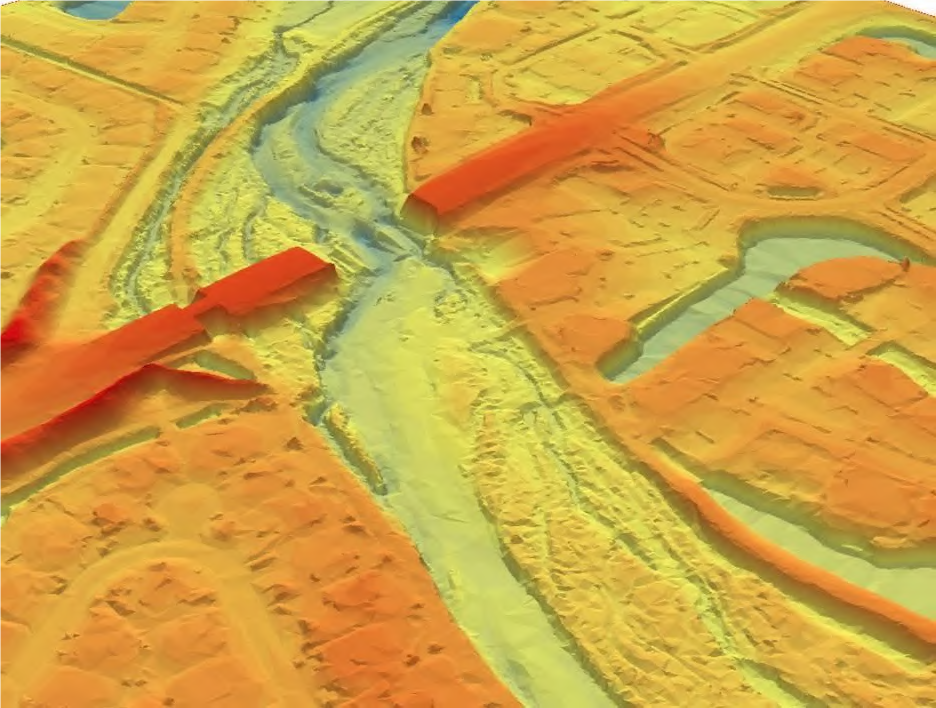FLOOD MANAGEMENT PROJECTS
Restored river bank by Duck Alley with root wads in place for fish habitat
Boise River 2-D model Tool
River Channel Impacts: Using Technology to Understand Predict & Manage
The District is quite excited about using a new, 2-Dimensional (2D-Model) river-modeling tool for evaluating Boise River flows, sediment and gravel bar movement in a whole new way, allowing us to be more proactive in managing the river for public good.
The 2-D Model tool has been developed via a broad-based partnership with 11 public agencies and partners in the valley, raising approximately $950,000 to develop the project into reality. We want to thank all of our partners for stepping forward to make this leading-edge model tool a reality.

The Boise River is the centerpiece of Idaho’s capital city and lifeblood for agriculture, industrial, municipal, and recreational activities in the Treasure Valley. The river provides irreplaceable natural, social and economic values that are the foundation for the way of life in the Treasure Valley.
When an opportunity arose in 2019 to apply to the Idaho Water Resource Board for a State Flood-Management Grant, we decided to push the envelope a little and apply for funds to develop the 2-D Boise River Model Tool. We wanted to get ahead of the curve and use the 2-D model to better understand and predict the impacts of changing river hydro-dynamics on the river channel and floodplain prior to spring flood events.
This has never been done for the Boise River corridor. Success would allow us and other parties to be proactive, rather than reactive to changes in the river environment.
Next Steps:
- Creation and Deployment of the Boise River 2D Model Tool (LiDAR data & 2-D Model) via the Army Corps of Engineers.
- Training: Train stakeholders to use BRMT
- Interagency Use: Coordinated use of BRMT in river management & land use planning
- BRMT Maintenance: Continue development & updating the model with new information.

Lidar image of the Boise River by Eagle Island.
Training
CHANNEL MAINTENANCE
Each winter the District removes accumulations of woody debris from the Boise River to maintain a clear channel and reduce property damage during high river flows. Trees, snags and debris can get caught up on bridges and other channel obstructions during high flows and cause localized flooding damage. Once an obstruction causes the water to overtop the banks, it’s difficult to predict where the flood water will go.
The District performs channel-maintenance activities during the winter months, generally from late November through early March, when flows are at 350 cubic feet per second or less as measured at Glenwood Bridge. All of these activities are permitted by the Army Corps of Engineers, Idaho Department of Water Resources and the Idaho Department of Environmental Quality. The DEQ regulates winter-burning activities, according to Air Quality standards.
Generally, the District only removes trees that have already fallen in the river or are about to fall in the channel. If a tree is ready to fall, the District often cuts the trunk 2 to 3 feet above the ground and leaves the root in place to help keep the bank stable. Woody debris is disposed of by burning, chipping or hauling away.
